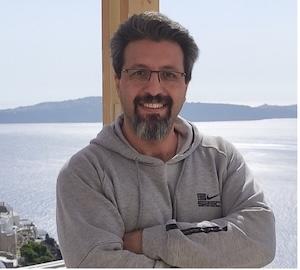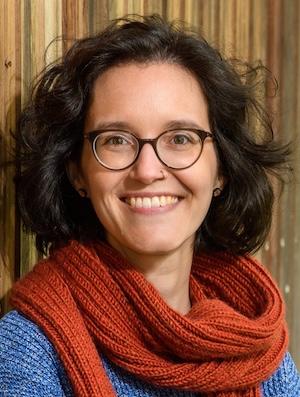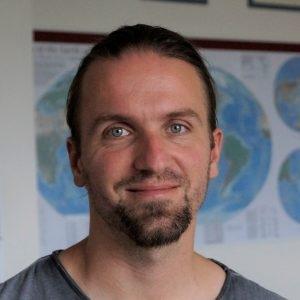Geo-colloquium programme
Program Winter-Semester 2025/26 |
|
16.10.202513:15, Lecture hall C.011 Dr. Kathleen Stoof-Leichsenring (AWI Potsdam)Sedimentary Ancient DNA - An Innovative Proxy for Paleoenvironmental ReconstructionAbstract: Understanding the development of past ecosystems provides valuable information about species dynamics under changing environmental conditions and allow ecosystem predictions under future climate change. Ancient DNA preserved in sediment cores, provide an archive of the past and makes it possible to track species without fossil remains. Moreover, ancient DNA allows higher taxonomic resolutions than traditional proxies (like pollen) allowing deeper insights into changes of composition, functionality and interactions between species over time. Arctic environments are highly threatened due to climate change and at the same time provide well suited archives of cold adapted ecosystems and its response to warming. In our research at AWI-Potsdam we aim to understand changes in Arctic ecosystem on long-time scale leveraging knowledge for ecosystem management and protection under future warming scenarios. Vita: Kathleen Stoof-Leichsenring is a senior scientist and laboratory leader of the research group “High-Latitude Biodiversity” in the section of Polar Terrestrial Environmental Systems at the Alfred Wegener Institute Helmholtz Centre for Polar and Marine Biology. Her research interests are in paleogenetics and - genomics combined with paleoenvironmental research with a focus on the Polar terrestrial and marine biomes and their compositional and functional changes from Late Pleistocene until recent Invited by: Pavel Tarasov |
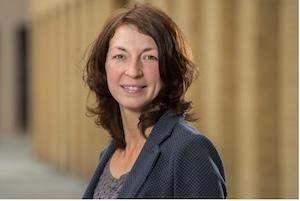 |
23.10.202513:15, Lecture hall C.011 Dr. Simona Regenspurg (GFZ Potsdam)Critical Raw Materials in Geothermal Fluids - Perspectives from the North German BasinAbstract: The co-use of geothermal fluids for heat and critical raw materials (CRM) provision becomes an increasingly attractive idea for geothermal operators and investors. This approach could be a way to fulfill both, climate goals and the implementation of the Critical Raw Material Act for Europe. So far specifically lithium (Li) is mined from geothermal fluids in some geothermal plants, e.g. in the Upper Rhine Graben. The amount of Li in a brine strongly depends on the geological and geochemical conditions of a reservoir. Currently, the North German Basin (NGB) obtains some attention due to its very high Li content in deep brines from Bunter and Rotliegend sandstones (up to 600 mg/L). Vita: Prof. Dr, Simona Regenspurg is a researcher at GFZ Helmholtz Centre for Geosciences. She received her diploma in geology from the LMU in Munich and her PhD in Environmental Sciences at the University of Bayreuth. After several postdocs (e.g. Colorado School of Mines, USA and EPFL Switzerland) she joined the geothermal group at GFZ. Her research is on geochemical processes in context with geothermal energy exploitation. At GFZ she is head of the working group "Geothermal Fluids" where in field and lab studies geothermal systems are investigated with focis on geochemical reactions at elevated temperatures and salinities. Since 2011 she is teaching at the Department of Hydrgeology at the FU Berlin where she received her habilitation in 2015 and the APL professorship in 2025. Invited by: Nadine Göppert |
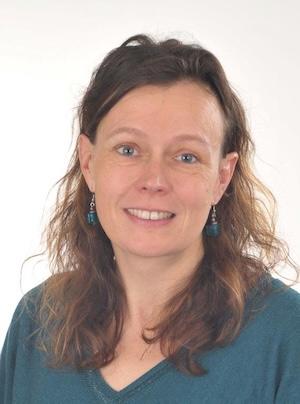 |
30.10.202513:15, Lecture hall C.011 Dr. Pavel Tarasov (FU Berlin)Palaeoenvironments and long-term culture change of hunter-gatherers in Northern Eurasia: What do we know and what do we want to know?Abstract: Since its introduction in 1916, pollen analysis has played a prominent role in a variety of methods used to reconstruct past environments, human economies, and the interactions between them. The introduction of new research methods (sedaDNA, biomarkers, isotopes, climate modelling, etc.) has further strengthened pollen analysis as a team player in multi-proxy interdisciplinary projects. This lecture focuses on Northern Eurasia, which played a key role in the spread of anatomically modern humans during the Upper Palaeolithic – a period that was climatically the harshest and most changeable phase of the last ice age. Vita: Pavel Tarasov is an apl Professor of Quaternary Sciences at Freie Universität Berlin. His research interests include pollen analysis, regional-scale reconstructions of Holocene and Pliocene-Pleistocene plant communities, quantitative pollen-based climate, tree cover and biome reconstructions, human environment interactions, and data-model comparison. His areas of research are Eurasia, from the Atlantic coast to Japan, North Africa and Arctic North America. During his research career in Germany, he received a visiting scholar award from the University of Alberta (Canada), a Heisenberg Fellowship (DFG), and a fellowship from the Alexander von Humboldt Foundation. His publication list includes 236 items and over 900 coauthors. Invited by: Stefanie Kaboth-Bahr |
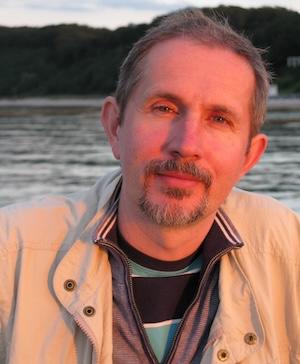 |
06.11.202513:15, Lecture hall C.011 Dr. Sadegh Karimpouli (GFZ Potsdam)Unsupervised Clustering of Seismic Catalog Features: Linking Laboratory Stress Evolution to the Preparatory Phase of Natural Fault SystemsAbstract: Despite decades of research, the identification of the preparatory phase of large earthquakes remains elusive due to the inherent complexity and variability of earthquake nucleation processes. To address this, we apply an unsupervised machine learning (ML) approach to cluster seismicity data in a high-dimensional feature space derived from earthquake catalog. In laboratory experiments, our analysis reveals three distinct clusters that align well with the temporal evolution of stress. In natural fault systems, seismicity transients preceding large earthquakes, when they occur, emerge as distinct stages of seismicity, transitioning from normal to critical before the mainshock. Vita: Sadegh Karimpouli is a researcher at GFZ Helmholtz Centre for Geosciences. He received his PhD in Exploration Geophysics from Amirkabir University of Technology, Iran. As an Associate Professor at the University of Zanjan, Iran, he developed machine learning models with a focus on digital rock physics applications. Since joining GFZ, his research has centred on explainable machine learning algorithms to investigate the preparatory phase of earthquakes. He has applied ML methods across different scales, from laboratory experiments to geothermal reservoirs and natural fault systems. Further details are available on his homepage and Google Scholar profile. Invited by: Marco Bonhoff |
|
13.11.202513:15, Lecture hall C.011 Dr. Dominic Wölki (U Freiburg)Radiogenic Isotopes in Peridotites: Tracing Mantle Circulation Through TimeAbstract: Peridotites act as geochemical archives that record mantle processes through time. Radiogenic isotope systematics, especially Hf–Nd, reveal how ancient melt depletion, later enrichment, and melt–rock interactions shape mantle domains. These isotopic signatures provide key insights into the circulation of material from mid-ocean ridges to subduction zones, linking mantle convection with crustal recycling. By integrating peridotite records across tectonic settings, we can trace the temporal and spatial evolution of mantle dynamics and Earth’s deep geochemical cycles. Research Interest: Plate tectonics is the result of the Earth’s most efficient way to lose heat and causes upwelling and melting of mantle, forming new oceanic crust. This crust is recycled back into the mantle at subduction zones. These processes cause differentiation and element cycling, affecting the composition of the mantle, crust, and the atmosphere over geological timescales. To understand the Earth as a complex system today and in the future, it is important to understand the evolution and interaction of those reservoirs. My current research focuses on igneous petrology and isotope and trace element geochemistry aimed at answering the fundamental questions of high-temperature element cycling at convergent and divergent plate boundaries. Specifically, I am working on the geodynamic evolution and element cycling at subduction zones and the long-term compositional evolution of the Earth’s mantle. The Earth’s mantle has been neglected in understanding element cycling, especially in subduction zones. Volatiles (e.g., CO2), either recycled back into the mantle or degassed during magmatism affects the atmosphere and thus life on Earth. My main research is focused on three topics: (1) Small and large scale spatial and temporal heterogeneity in oceanic mantle domains. (2) The influence of mantle source composition on the formation of oceanic spreading centres and oceanic rises. (3) The recycling of elements in subduction zones and their influence on the composition of the melting residue, crust, and atmosphere. I am facilitating different different techniques like microscopy, electron microprobe, LA-ICP-MS and MC-ICP-MS to understand the long-term evolution of the Earths different reservoirs. Link to homepage: https://www.minpetro.uni-freiburg.de/team/woelki/woelki Invited by: Elis Hoffmann |
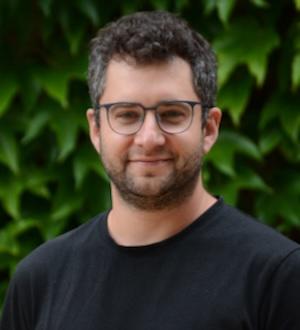 |
20.11.202513:15, Lecture hall C.011 Dr. Taylor Smith (U Potsdam)Predicting Instabilities in Transient Landforms and Interconnected EcosystemsAbstract: Many parts of the Earth system are thought to have multiple stable equilibrium states, with the potential for rapid and sometimes catastrophic shifts between them. A lot of recent scholarship has focused on understanding tipping points in large-scale systems – such as the Amazon Rainforest, Greenland Ice Sheet, and Atlantic Meridional Overturning Circulation – using similar time-series based methods. In my talk I will present two main findings: (1) a novel method for examining tipping points in seasonal and spatio-temporal fields of data, and (2) applications of this new method to a system that has so far not been studied using the framework of tipping points: glacier surge events. Scientific Vita: My research focuses on extracting signals from diverse environmental datasets. I completed a PhD at Uni Potsdam (2018) in Remote Sensing, with a focus on changes in snow-water storage across High Mountain Asia. My current projects are focused on monitoring high-altitude rivers in Nepal, quantifying the state and fate of snow-water resources throughout Eurasia, and understanding the resilience of natural ecosystems. Link to homepage: https://tasmi.github.io/ Invited by: Steffi Tofelde and the Sedimentary Systems Group |
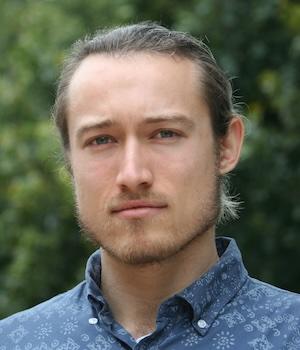 |
27.11.202513:15, Lecture hall C.011 TBD |
|
04.12.202513:15, Lecture hall C.011 Dr Evangelos Moulas (Johannes Gutenberg Universität Mainz)Title TBDInvited by: Timm John |
|
11.12.202513:15, Lecture hall C.011 Dr. Stephanie Spahr (IGB Berlin)Safeguarding water quality: The challenge of trace organic contaminants in the urban water cycleAbstract: Freshwater resources worldwide are compromised by an ever-increasing number of pollutants that enter our water bodies through insufficiently treated wastewater or untreated agricultural and urban runoff. Man-made chemicals such as pesticides, pharmaceuticals, and industrial chemicals raise particular concern as they can cause adverse effects on ecosystems and human health. I will highlight that both droughts and extreme rainfall can lead to surface water quality deterioration, often with unknown risks. Cities, including Berlin, are implementing new strategies for climate-resilient water management. I will discuss novel approaches to assess and improve the treatment performance of nature-based solutions for stormwater purification to promote safe circular water use. Vita: Dr. Stephanie Spahr is a research group leader at the Leibniz Institute of Freshwater Ecology and Inland Fisheries (IGB) in Berlin. Her research focuses on the occurrence, fate, and removal of organic contaminants in natural and engineered aquatic systems. She conducted her doctoral research at the Swiss Federal Institute of Aquatic Science and Technology (Eawag, Dübendorf) and obtained her PhD in 2016 from the Swiss Federal Institute of Technology in Lausanne (EPFL). She was a postdoctoral scholar at the Department of Civil and Environmental Engineering at Stanford University in California, USA, and is currently a Member of the Board of the German Water Chemistry Society. webpage: https://www.igb-berlin.de/en/profile/stephanie-spahrInvited by: Nadine Göppert |
|
18.12.202513:15, Lecture hall C.011 TBD |
|
08.01.202613:15, Lecture hall C.011 Dr. Alan Hastie (U Edinburgh)Some Thoughts on Making the Oldest Continental Crust Using Petrological Experiments - Don't Shoot the Messenger!Abstract: Ongoing work to investigate the formation of the oldest continental crust 4.3-3.5 billion years ago using experimental petrology. The first continental material is represented by granitoids belonging to the tonalite, trondhjemite, granodiorite suite (TTG). The TTG are thought to be derived from the partial melting of metamorphosed basis igneous rocks. In this seminar we look at the products of melting experiments on several modern and ancient starting compositions and explore whether they can generate TTG-like liquids. Vita: Alan Hastie is associate Professor at the University of Edinburgh and I did his PhD at Cardiff University in the UK. Invited by: Elis Hoffmann |
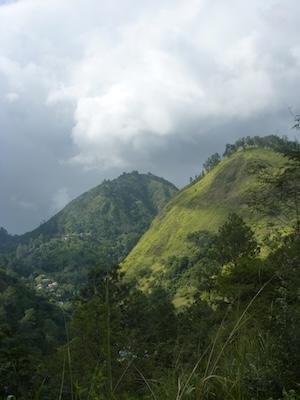 |
15.01.202613:15, Lecture hall C.011 Dr. Barbara Ratschbacher (Bundesanstalt für Geowissenschaften und Rohstoffe Hannover)Fe3+/FeT ratios in igneous amphibole minerals: a tool to understand the redox state of arc magmasInvited by: Harry Becker |
|
22.01.202613:15, Lecture hall C.011 Dr. Christian Sippl (Czech Institute of Geophysics)Characterizing the Transition from Flat to Inclined Slab in Central ChileAbstract: In Central Chile, the southern termination of the Pampean flat slab marks a sudden transition of slab geometry, co-located with the subduction of the Juan Fernandez Ridge. Past studies have inferred a slab tear or hole in this location. We re-investigate the region using new evidence from microseismicity as well as seismic tomography, to illuminate the detailed geometry of the slab as well as processes in the overlying crust. Vita: PhD 2013 FU Berlin/GFZ Potsdam, 2013-2018: Postdoc positions at Australian National University (Canberra, Australia, 2013-2016) and GFZ Potsdam (2016-2018), since 2019: Researcher at Institute of Geophysics, Czech Academy of Sciences, Prague, CZ; Research Interests: Seismology and tectonics of active plate boundary systems Invited by: Jonas Folesky |
|
29.01.202613:15, Lecture hall C.011 Dr. Hauke Hussmann (DLR Berlin)Measurements with the Bepi Colombo Laser Altimeter (BELA)Invited by: Frank Postberg |
|
05.02.202613:15, Lecture hall C.011 Dr. Derya Gürer (U Heidelberg)Title TBDInvited by: Alex Webb |
|
12.02.202613:15, Lecture hall C.011 Dr. Emanuel Tschopp (FU Berlin)Title TBDInvited by: Stefanie Kaboth-Bahr |
|
Subscribe to the Geocolloquium mailing list:The programme and lecture information are distributed via the colloquium mailing list: https://lists.fu-berlin.de/listinfo/geokolloquium. You can directly subscribe to this list using the link. We usually send out only two announcement emails per lecture. |
|
